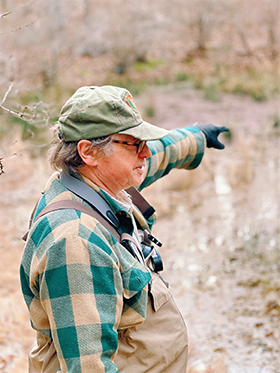In our hyper-connected world, the simple act of being fully present has become a revolutionary practice. As I’ve observed through years of studying mindfulness traditions, the mind’s natural tendency is to drift—planning tomorrow’s meeting while washing dishes, replaying yesterday’s conversation during your morning walk, or scrolling through social media while sitting with loved ones. This constant mental time-traveling robs us of the richness available only in the present moment.
Practice – The Nature of Presence
Presence isn’t about achieving some special state of consciousness. Rather, it’s about returning to our natural capacity for awareness—something we all innately possess but rarely access fully. When we’re truly present, we experience life directly rather than through the filter of our judgments, stories, and preoccupations.
Consider how a child engages with a butterfly or examines a leaf. There’s no analysis about what the butterfly represents or whether the leaf is good or bad—just pure fascination with what is. This quality of attention is available to all of us, at any moment.

The obstacles to presence are numerous: our culture’s emphasis on productivity and multi-tasking, the dopamine hits of digital notifications, and our own ingrained habits of mental time-travel. Yet with consistent practice, we can strengthen our capacity to return to the now.
Practice – The Science Behind Mindfulness
Research in neuroscience has validated what contemplative traditions have taught for centuries. Regular mindfulness practice is associated with changes in brain regions involved in attention regulation, emotional processing, and self-awareness. Studies show that even 8 weeks of consistent mindfulness practice can lead to measurable changes in brain structure and function.
When we practice presence, several beneficial shifts occur:
- The default mode network—responsible for mind-wandering and self-referential thinking—becomes less dominant
- The anterior cingulate cortex—involved in attention regulation—shows increased activity
- The amygdala—our brain’s alarm system—shows decreased reactivity to stressors
These neurological changes translate into practical benefits: improved focus, greater emotional regulation, reduced stress reactivity, and enhanced immune function. Interestingly, research suggests that these benefits aren’t dependent on belief or special aptitude—they’re natural consequences of training attention.
Cultivating Everyday Mindfulness
While formal meditation serves as valuable training grounds for presence, the true art lies in weaving mindfulness into the fabric of daily life. Here are several approaches I’ve found particularly effective:
Anchor Practices
Designate certain everyday activities as mindfulness anchors—moments when you commit to being fully present. Effective anchors include:
- The first sip of morning coffee or tea
- Washing hands
- Walking through doorways
- Waiting at traffic lights
- The moment before checking your phone
When engaging with these anchors, bring full attention to the sensory experience—the warmth of water, the sensation of breathing, the feeling of your feet making contact with the ground.
The STOP Practice
When caught in autopilot or feeling overwhelmed, the STOP practice offers a rapid return to presence:
S – Stop whatever you’re doing
T – Take a breath
O – Observe your present experience (sensations, thoughts, emotions)
P – Proceed with greater awareness
This simple intervention, taking just 30 seconds, can interrupt reactive patterns and create space for more intentional responses.
Mindful Transitions – Practice
The spaces between activities offer rich opportunities for presence. Instead of immediately moving from one task to the next, pause for three conscious breaths. Notice the completion of what came before and set a clear intention for what’s ahead. This practice prevents the day from becoming an undifferentiated blur of activity.

Environmental Reminders – Practice
Our environments powerfully shape our awareness. Consider placing mindfulness cues in your physical space:
- A small stone on your desk
- A meaningful quote on your bathroom mirror
- A particular chime or bell on your phone
- A red dot sticker on your computer or steering wheel
When encountering these reminders, pause for a moment of presence—simply noticing your breathing and current experience without judgment.
Navigating Common Challenges
The path of mindfulness includes predictable obstacles. Recognizing these challenges as normal aspects of the practice helps sustain commitment during difficult periods.
The Wandering Mind
Perhaps the most universal experience in mindfulness practice is discovering how frequently the mind wanders. Many beginners interpret this as failure, not realizing that noticing the wandering is precisely the practice. Each time you notice your mind has wandered and gently return attention to the present, you’re strengthening the neural networks of awareness—like doing a repetition in the gym.
Resistance and Boredom
The mind often resists presence through boredom, impatience, or the sense that “nothing is happening.” This resistance is natural—our habit-driven minds seek stimulation and novelty. When resistance arises, practice observing it with curiosity rather than judgment. What does boredom actually feel like in the body? Where do you feel impatience? This turning toward experience, rather than away from it, cultivates the capacity to stay present even with discomfort.
The Inner Critic
Most practitioners encounter an inner critic that judges their mindfulness efforts as inadequate. This voice might say, “You’re terrible at this” or “Real meditators don’t have so many thoughts.” When this critic appears, recognize it as another mental phenomenon to be observed with compassion. The judging mind is not a problem to eliminate but another aspect of experience to meet with kind awareness.
Deepening Your Practice
As mindfulness becomes more integrated into daily life, certain approaches can help deepen the practice:
Intention Setting
Begin each day by setting a clear intention for presence. This might be as simple as stating, “Today I will practice returning to the present moment” or “Today I will notice when I’m lost in thought.” The intention creates a container for practice and activates the reticular activating system—the brain’s filtering mechanism—to notice opportunities for presence.
Curiosity and Kindness
Approach your experience with genuine curiosity rather than striving for particular states. Ask: “What’s happening right now?” without needing things to be different. When you notice you’ve been lost in thought or caught in reactivity, respond with kindness rather than self-criticism. This quality of gentle friendliness toward your own experience creates the conditions for deeper awareness.
Community Support
The path of mindfulness is greatly supported by community. Consider joining a meditation group, taking a structured mindfulness course, or establishing a regular check-in with a practice partner. Sharing experiences and challenges normalizes the ups and downs of practice and provides accountability during periods of low motivation.
The journey toward present-moment awareness isn’t about perfecting some technique or achieving a permanent state of enlightenment. Rather, it’s about cultivating an increasingly intimate relationship with your own experience—meeting each moment with freshness and receptivity. In this meeting, we discover that the present moment isn’t merely a concept but the only place where life actually happens. And in that recognition lies the profound simplicity of mindfulness: we’re always just one breath away from being fully here.



